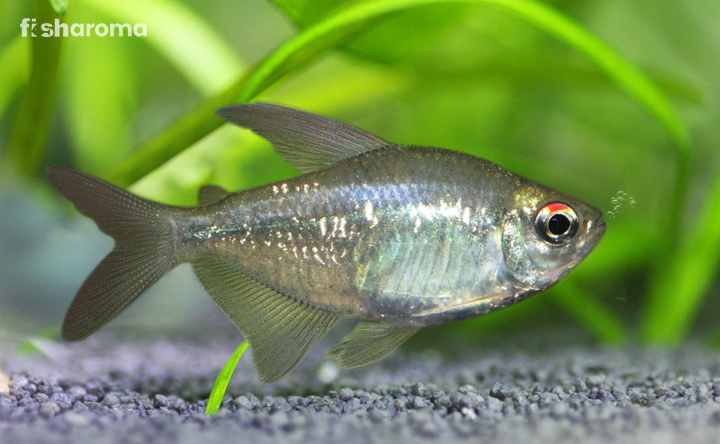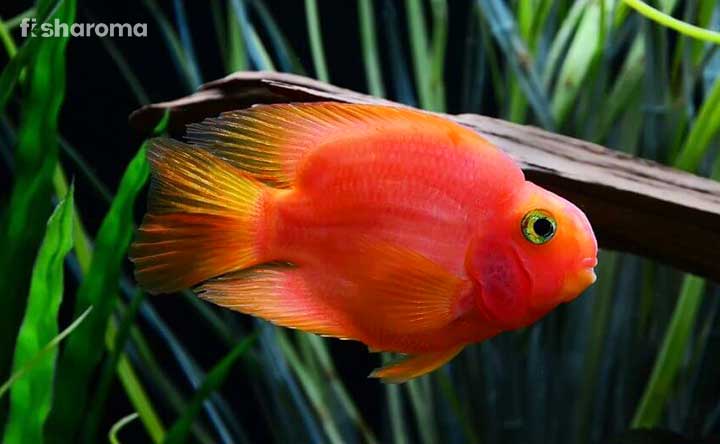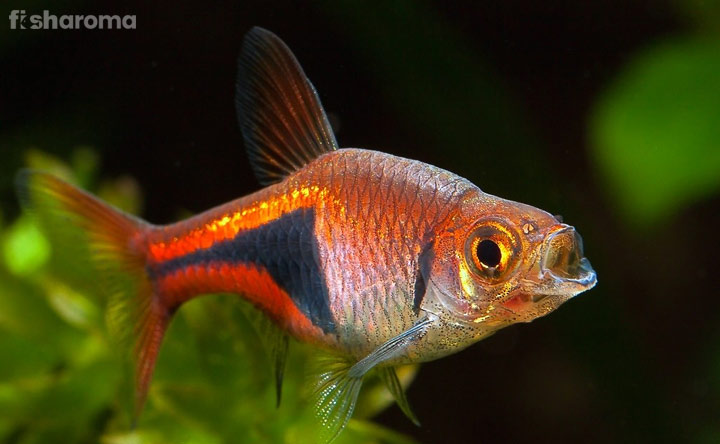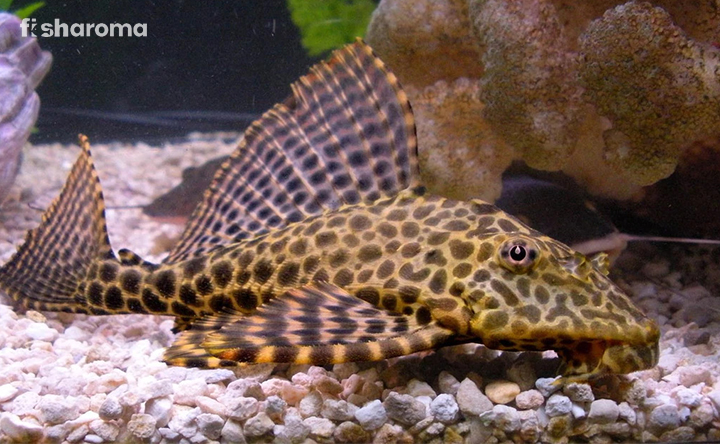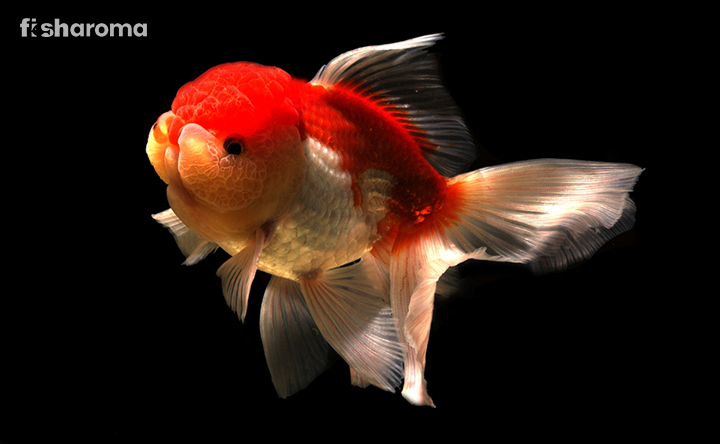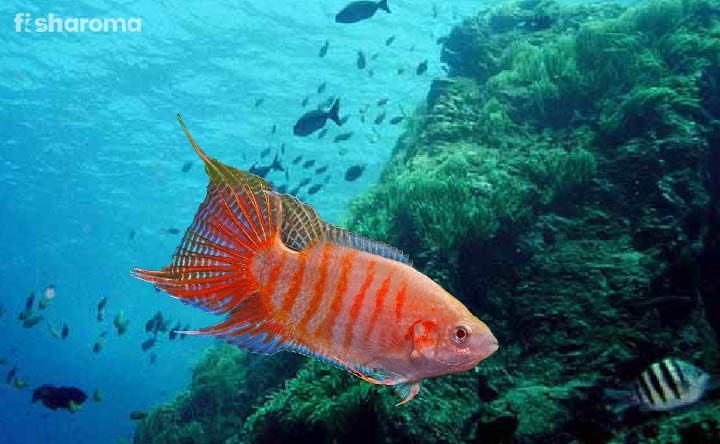Bleeding Heart Tetra- An All-inclusive Care Guide
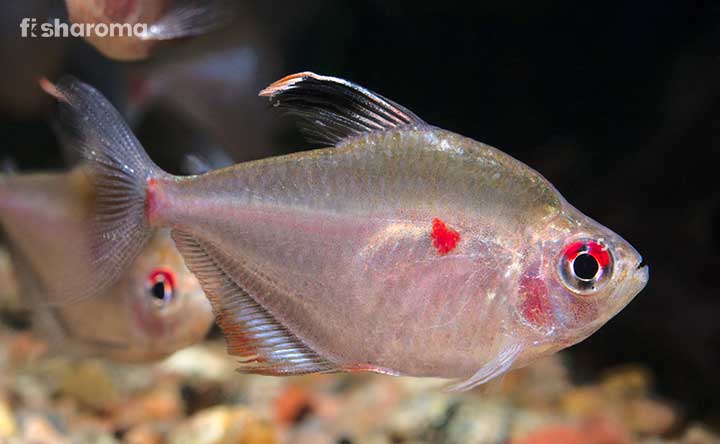
- Origin & Habitat of Bleeding Heart Tetra
- Appearance of Bleeding Heart Tetra
- Behaviour of Bleeding Heart Tetra
- Lifespan of Bleeding Heart Tetra
- Diet of Bleeding Heart Tetra
- Tank Requirements for Bleeding Heart Tetra
- Water Type for Bleeding Heart Tetra
- Suitable Tank mates Bleeding Heart Tetra
- Breeding of Bleeding Heart Tetra
- Diseases of Bleeding Heart Tetra
- Summary
Bleeding Heart Tetra fishes are tropical in nature with freshwater as their preference. They are not very complicated to care for, this beginner-friendly nature easily lands them on the aquarist favourite list.
This exquisite breed, with elegant compositions of colours, would light up the aura of your aquarium and if you want to own one, this complete care guide of Bleeding Heart Tetra is just the one for you. Providing you with everything you need to know, here goes.
Key Specifications
There are a few key specifications you must check out:
| Scientific Name | Hyphessobrycon erythrostigma |
| Origin | Upper Amazon River Basin in Peru(South America) |
| Lifespan | 5 years |
| Colours/Patterns | Beige-Orange Silvery Lavender An irregular patch of radiant red on its side, resembling the shape of a heart. A red stripe splits the body in two, vertically. |
| Temperament | Peaceful |
| Size | 2.5-3.5 inches |
| Diet | Omnivorous |
| Family | Characidae |
| Compatibility | Good community fish. |
| Tank size | 20-40-gallon tank |
| Care level | Easy |
| Water preference | Freshwater |
Overview
Scientifically known as the Hyphessobrycon erythrostigma, the Bleeding Heart Tetra fishes can be found in the upper regions in the Amazon River Basin. They experience a variety of acidity in the water conditions, and slow-moving currents. Pretty hardy in nature, they are able to deal with a wide range of water parameters.
Easy to care for, these Tetra fishes of majestic beauty come in a beautiful set of colours and compositions. Other than all these already positive factors, these bottom-mid dwelling fishes make up to be fit for the community, with compatibility ranging from fishes of similar peaceful nature, to even that of semi-aggressive.
Origin and Habitat of Bleeding Heart Tetra
The Bleeding Heart Tetra fishes are mostly available in the upper regions of Amazon River Basin, which is basically a chunk of Peru, South America. Water currents of a slower pace and acidic water conditions is their preference, and natural habitat despite them being one of the hardy lot in the tank.
They are mostly middle to bottom dwelling fishes, so they mostly swim around their surface of preference. Their natural habitat just calls for the bare minimum, which makes emulation in the tank very easy. This factor contributes to their easy-going persona, toughness and low level of care difficulty.
Appearance of Bleeding Heart Tetra
They are a literal treat to the eye, from all the compositions of colour they come in. Initially, they may not show too dense colours because of their change in environment, but with time, their shades alter from that of light pink to radiant red. Originally, their signature beauty of patterns rests in their unique heart shape on the side, other than that, they have a very neutral body, with shades of red, and a hint of a little black towards the fin. They possess a unique body shape, almost like a tiny hunch-back appearance.
Size
They grow up to max of 3.5 inches in the wild, and the regular aquarium version ranges somewhat about 2 inches. This makes them pretty flexible and less space-consuming in the tank.
Colour
These beauties come in visibly cute colour ranges, of varied light pink to dense bright red, which happens over time. The signature heart-like pattern on the side of these Tetras are unique, and look very appealing to the eye. Other than that, a light red stripe seems to split the top and bottom part of the fish’s body. Colours can range from light pink to dark red accents, depending upon their suitability in the environment so formed.
Behaviour of Bleeding Heart Tetra
Bleeding Heart Tetra is a great community fish for their peaceful nature, and massive compatibility. They dwell around the mid-bottom layer of water, and have almost no specific needs. Super easy to care for, these exquisite beings prefer to exist in schools. At least six or more is a good pick for your tank of at least 40 gallons. These fishes are decently social and keep each other’s behaviour in check while existing in a group.
Lifespan of Bleeding Heart Tetra
They live for about 5 years under aquarium conditions, provided the fact they are taken care of well. It is quite long, considering they are so vibrant, and aesthetic in the tank; so the investment is very well worth it.
Diet of Bleeding Heart Tetra
The Bleeding Heart Tetra fishes are omnivores, which makes feeding them really easy and there is a lot to choose from.
In order to feed them in an aquarium, we have simplified things you can feed them:
- Live Brine shrimp
- Daphnia
- Bloodworm
- Flake based aquarium feedable
- Chopped lettuce
They can be fed anything they can munch on, and finish within a maximum of 5 minutes.
Tank Requirements for Bleeding Heart Tetra
Following talks about things you will need to maintain properly, in order to make a Bleeding Heart Tetra survive in the tank:
Tank Lid
In general, a tank lid helps stop the accumulation of dust, and end up polluting the water. They are mostly mid-dwelling or bottom dwellers in general, so they don’t have a specific criterion other than the usual function of the lid.
Tank Size
Around 20-40 gallons work well, when it comes to tank size necessary for the Bleeding Heart Tetra fishes. They like to exist in schools, so naturally, it is healthy to keep the tank spacious.
Substrate
There is no specific demand for substrate, but a sandy substrate is comfortable for this variant of Tetra fishes.
Filter
A filter is beneficial for any kind of fish, let alone Bleeding Hearts. It keeps the tank in the clear and supplies it with oxygen, which is necessary. Additionally, they produce a lot of waste, so the usage of a strong filter is needed.
Ornaments
They are flexible with the usage of most ornaments like figurines, or aquarium decorations. This nature allows you to go all-in with the decor and enhance the beauty of your tank, aside from the presence of these magnificent beings.
Lighting
Lighting should be subtle, they originally survive in the medium to low levels of water, so they do not require lighting as such.
Presence of Flora
The Bleeding Heart Tetra fishes like a well planted tank, so you can go crazy with the plants. More vegetation enhances the oxygen levels of the tank and is generally good for their health.
Cleaning Method
Bleeding Heart Tetras are capable of producing a pretty huge amount of waste, so regular or alternate cleaning is necessary. They like existing in groups so more the fishes, more the waste. Cleaning the sides of the aquarium glass, replacement of substrate, occasional replacement of tank water, cleaning of the filters is important, as keeping any of that neglected may be detrimental to the fish’s health.
Water Type for Bleeding Heart Tetra
| Hardness | Below 8 dGH/dKH |
| Temperature | 22-27 Degrees Celsius |
| pH | 6.5-7.5 |
Hardness
A minimum water hardness range of max 8 dGH/dKH is beneficial, as they do not like their water too hardy.
Temperature
A temperature range of 22-27 Degrees Celsius is good for them.
pH
Keeping the pH stable helps in the prevention of diseases, thus keeping the fish’s health unaffected. A range of 6.5-7.5 fits well as a parameter, when it comes to a Bleeding Heart Tetra aquarium.
Compatibility of Bleeding Heart Tetra
Bleeding Heart Tetra fishes are peaceful, they can easily exist in a community tank because of their nature. They are compatible with most fishes and more so, they can even adjust with semi-aggressive fishes other than the similar natured peaceful ones.
Suitable Tank mates
These fishes are peaceful and have a huge range when it comes to suitable tank mate pair-ups, they are:
- Guppies
- Neon Tetra
- Harlequin Rasboras
- African Giant filter shrimp
- Cories
- Danios
Unsuitable Tank mates
The Bleeding Hearts are usually more timid other than being peaceful, too aggressive or big fishes are not compatible with them at all. They might either end up becoming prey, or they may get overwhelmed which leads to stress.
Breeding of Spotted Bleeding Heart Tetra
They are egg-layers so breeding them in captivity is do-able. Still, breeding them in a community tank is way overboard, so a separate tank for the process is important.
The separated tank should have water parameters comparatively acidic, exceeding at least above a pH of 6.0. The addition of spawning mops or plants can capture or protect the eggs, so it makes up for the missing paternal instinct in the Bleeding Heart Tetra fish. Additionally, the spawning mop keeps the egg hidden.
A rise in temperature, even if it is just by a few degrees, around the time of breeding is important. The formation of eggs and after laying, hiding them in plants, the cycle is quick. The eggs may stick themselves to the spawning mop, or leaves or just sink below.
Safe removal of the parents due to lack of parental behaviour is necessary, as otherwise, they may just feed on the eggs. The off-spring takes about three days to spawn, and after feeding on the egg sac for a while, they swim freely. Immediately feeding them with baby shrimp or infusoria is a good move to keep them healthy and in shape.
Diseases of Bleeding Heart Tetra
Diseases are common be it any kind of fish. Similarly, our exquisite Tetras are not invincible. A few known things about related diseases are given below:
Fin rot
Bacterial-It happens as a result of bacterial infection, a bacteria by the name of Pseudomonas fluorescens causes a tattered rotting in the fin. The fungal variant of the same makes the fin rot even more vigorously.
Fungal-The fungal variant of the same makes the fin rot even more vigorously and even, which may result in the formation of a white edge.
Ich
It is a very common disease in most tropical-fish tanks, it causes small white spots on both body and gills. Secondary microbial infections, or direct tissue damage, maturation of the infecting parasite in the fish-skin’s epithelium, may also result in more symptoms like abnormal hiding, and loss of appetite.
Treatment
Not much is known about specific diseases or cures of Bleeding Heart Tetras, but there can be safety measures that can prevent them from getting fatally harmed by the above mentioned. Here goes a few measures that would prevent the measures from getting sick:
- Periodic inspection of the Bleeding Heart Tetra fishes.
- Quarantining the affected immediately from the community tank.
- Keeping the water profile stable and in check.
- Notice lethargy or visible signs of physical ailment in the fishes.
Summary
This article talks about the serenity and majestic presence of the Bleeding Heart Tetra fish, alongside all the informational content you will need to know, if you want to own a school of these. They not only increase the appeal of your aquarium, but they are very interesting and active. The investment is well worth it as they live for decent years, and are super beginner-friendly with an easy-care regime.
Similar Care Guides you may like:
- Harlequin Rasbora Care Guide – They swim in unparallel patterns and just like the above variant of Tetras, they prefer existing in schools.
- Molly Fish Care Guide – A fish of personality and uniqueness indeed, these fishes are peaceful omnivores, living up to 5 years.
- Neon Tetra Care Guide – They are freshwater jewels of vibrancy or translucence. Similarly originating from the Amazon Basin, these fishes are the ones to keep a lookout for.

